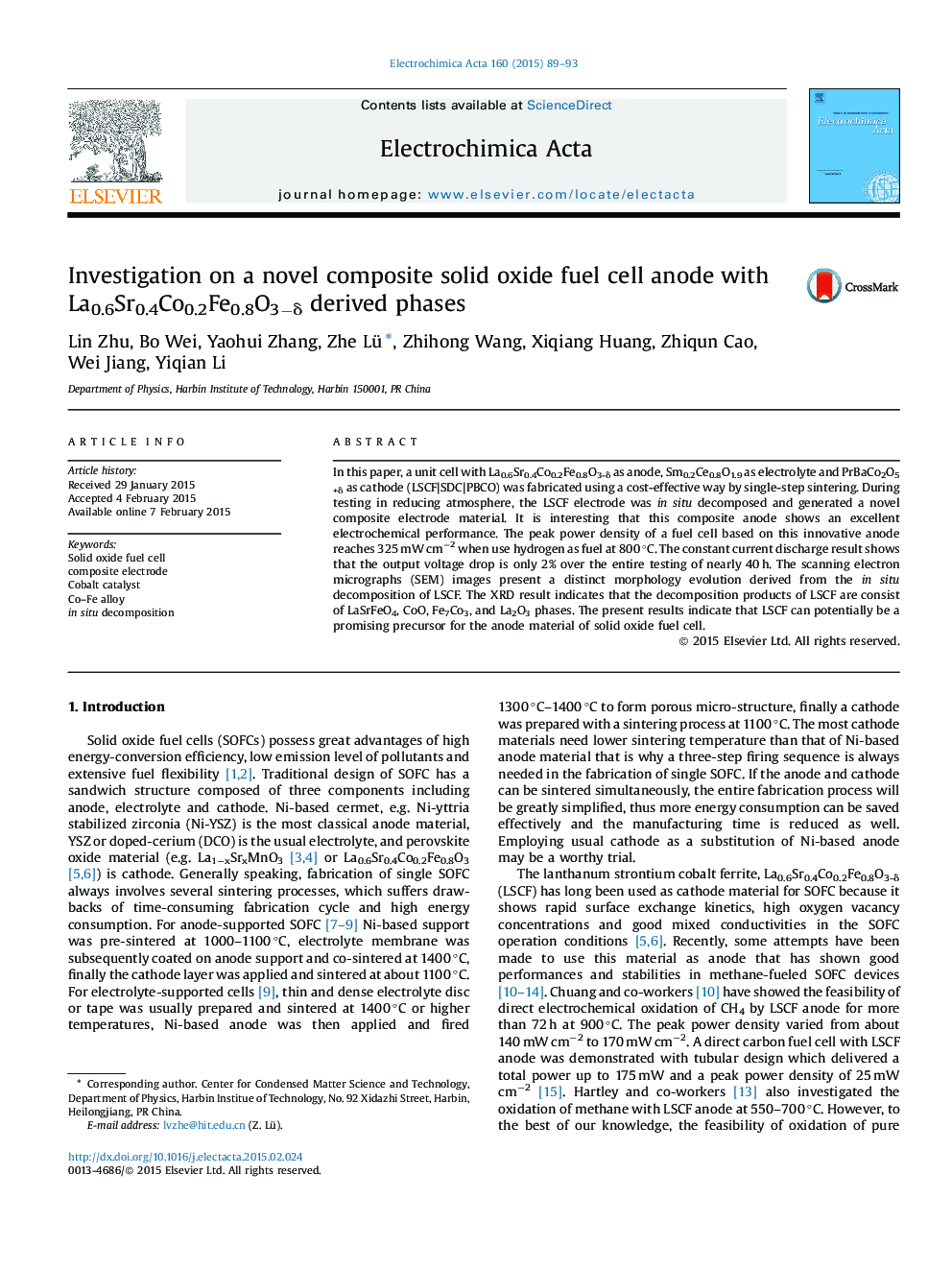| Article ID | Journal | Published Year | Pages | File Type |
|---|---|---|---|---|
| 184391 | Electrochimica Acta | 2015 | 5 Pages |
•Single-step sintering fabricates both anode and cathode of solid oxide fuel cell, saving energy consumption effectively.•Composite hydrogen electrode generated in situ.•Button cells show stable galvanostatic operation for ∼40 h.
ABSTRACTIn this paper, a unit cell with La0.6Sr0.4Co0.2Fe0.8O3-δ as anode, Sm0.2Ce0.8O1.9 as electrolyte and PrBaCo2O5+δ as cathode (LSCF|SDC|PBCO) was fabricated using a cost-effective way by single-step sintering. During testing in reducing atmosphere, the LSCF electrode was in situ decomposed and generated a novel composite electrode material. It is interesting that this composite anode shows an excellent electrochemical performance. The peak power density of a fuel cell based on this innovative anode reaches 325 mW cm−2 when use hydrogen as fuel at 800 °C. The constant current discharge result shows that the output voltage drop is only 2% over the entire testing of nearly 40 h. The scanning electron micrographs (SEM) images present a distinct morphology evolution derived from the in situ decomposition of LSCF. The XRD result indicates that the decomposition products of LSCF are consist of LaSrFeO4, CoO, Fe7Co3, and La2O3 phases. The present results indicate that LSCF can potentially be a promising precursor for the anode material of solid oxide fuel cell.
